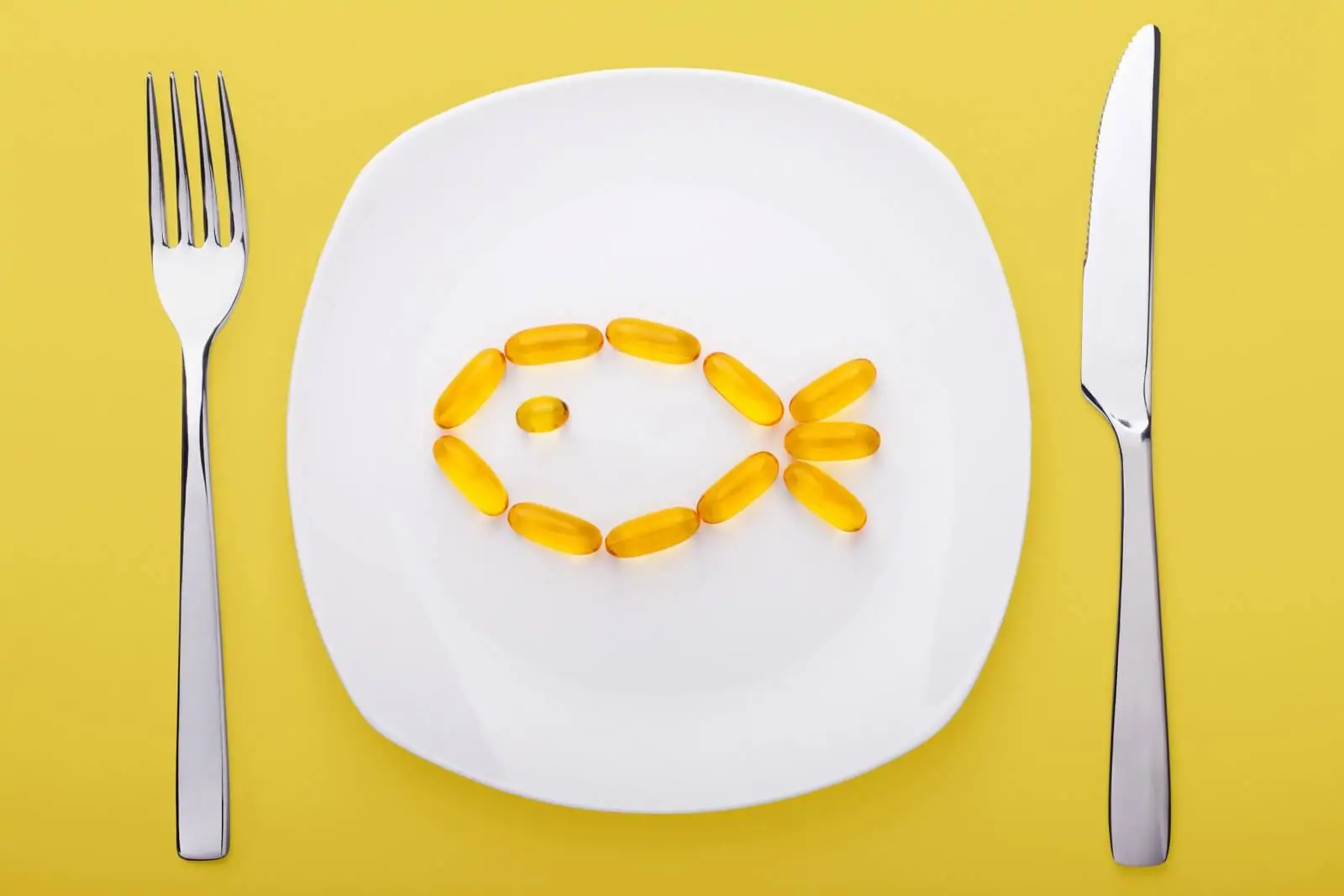What nutrients characterize fish?
Above all, regardless of the method of preparation, fish meat is a source of easily digestible protein with very good amino acid composition. Fish belong to the group of products characterized by the highest digestibility and thus protein absorption. It has been shown, that among other protein-rich products, fish meat is the best in terms of protein absorption. The results obtained from one of the studies concerning the percentage digestibility of proteins in products are, among others: chicken – 94.73%, pork – 93.74%, milk powder – 87.32%, soybean – 78.05 %, fish – 94.87%.
Fish are also a source of fat.
And what a source of fat it is! Fish, and in particular sea fish, are a source of polyunsaturated fatty acids from the n-3 family (mainly EPA and DHA), which the human body cannot produce alone and must be provided in food. Depending on the fat content, fish can be divided into: lean – in which the amount of this macroelement does not exceed 5% (for example, this group includes: cod, pollock, sole, trout, perch) and fat – with a fat content above 5% (as an example, represented by: salmon, mackerel, herring, eel).
If you were to compare fish meat with pork, beef, and poultry, fish also contain more minerals (including phosphorus, potassium, and magnesium, also, sea fish are an important source of iodine and fluorine in the diet) and vitamins. Fish can be characterized by a significant content of group B vitamins. It has even been shown that thanks to the content of niacin (vitamin PP), a diet rich in fish also plays a key role in preventing mental disorders such as schizophrenia. Furthermore, it reduces aggression, depression, and even dyslexia.
Sea fish also contain a relatively large amount of vitamins A and D. Vitamin A can be found primarily in mackerel, tuna, eel, whereas vitamin D in salmon, trout, herring, and also in eel.
Which canned fish should be eaten most often?
That depends on … what is important to us. Particular fish species differ in terms of nutrient content. If fish is the main source of polyunsaturated fatty acids in your diet – which is very beneficial to your health – choose canned salmon, as well as sardines and mackerel. They are the richest in omega-3 fatty acids. The content of these fatty acids in 100 g of canned product is as follows:
- Salmon – approx. 2000 mg (2 g)
- Sardines – approx. 1800 mg (1.8 g)
- Mackerel – approx. 1400 mg (1.4 g).
It is worth noting that the average human demand for the main polyunsaturated fatty acids (docosahexaenoic, DHA, and eicosapentaenoic, EPA) is 250 mg (both of these acids combined). Assuming that EPA and DHA make up the majority of polyunsaturated fatty acids contained in fish, supplying 100 g of canned fish covers the need for these important fats even several times over!
Fish as the main product providing vitamin D? Look no further – canned fish also have a voice here. Research by the Maritime Fisheries Institute shows that of the preserved fish, sprat had the highest content of this vitamin – around 5.5 micrograms of vitamin D in 100 g of product. Assuming that children, adolescents, and adults should consume 5-10 micrograms of vitamin D per day – a serving of sprat turns out to be sufficient here. Enjoy Your meal!
Source:
https://mir.gdynia.pl/wartosc-odzywcza-ryb-i-przetworow-rybnych/ [dostęp dn. 6.09.2019 r.]
Majewski M., Lebiedzińska M.: OCENA WYBRANYCH PRODUKTÓW ŚLEDZIOWYCH JAKO ŹRÓDŁA NIACYNY W DIECIE. BROMAT. CHEM. TOKSYKOL. – XLVI, 2013, 4, str. 485 – 489.
Kaliniak A. i wsp.: PROFIL KWASÓW TŁUSZCZOWYCH MIĘSA, IKRY I WĄTROBY RYB. ŻYWNOŚĆ. Nauka. Technologia. Jakość, 2015, 2 (99), 29 – 46.
